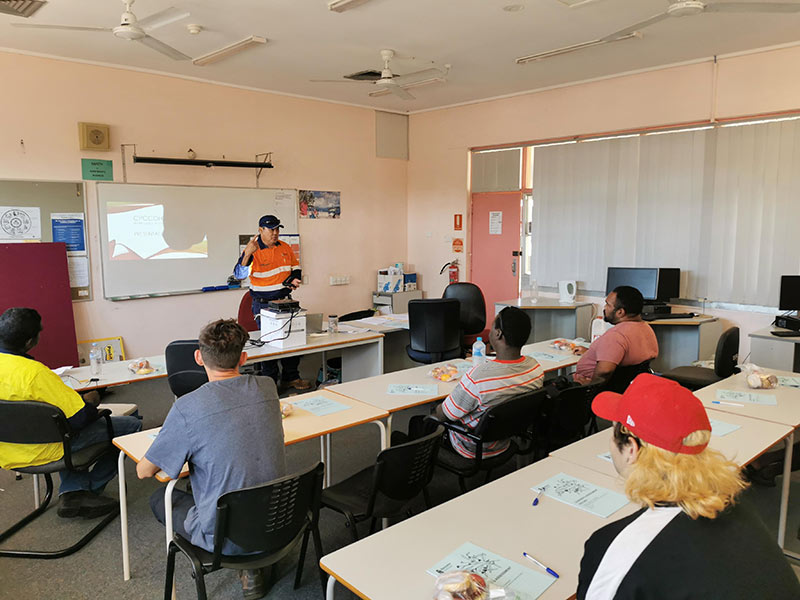Understanding the White Card Course
White Card training, formally known as the Construction Induction Training, is a mandatory certification for individuals looking to work in the construction industry in Australia. This course is designed to provide workers with essential knowledge about health and safety regulations, ensuring that they are prepared to recognize and mitigate potential hazards on construction sites. The White Card serves as proof that a worker has completed the necessary training and understands the importance of workplace safety.
The Legislative Background
In Australia, safety regulations in the construction industry are governed by both federal and state laws. The introduction of the White Card course arose from the need to standardize safety practices across various states and territories. It aligns with the Work Health and Safety (WHS) Act and regulations, which aim to protect the health and safety of workers. Each state and territory may have slight variations in their requirements, but the fundamental principles of the White Card training remain consistent nationwide.
Who Needs a White Card?
The White Card is required for anyone who wishes to work on a construction site, including:
Labourers: Those involved in manual work, including site preparation and demolition.
Trade Workers: Electricians, plumbers, carpenters, and other skilled tradespeople.
Supervisors and Managers: Individuals overseeing construction projects must also be certified.
Students and Apprentices: Those training or gaining experience in the construction field.
Obtaining a White Card is often a prerequisite for employment in the construction sector, making it crucial for job seekers in this field.
Key Components of the White Card Training
The White Card course covers various topics critical to maintaining a safe working environment. Some of the key components include:
1. Understanding Hazards and Risks
Participants learn to identify common hazards on construction sites, such as falls, equipment failures, and exposure to harmful substances. The course emphasizes risk assessment techniques, enabling workers to evaluate potential risks and implement appropriate control measures.
2. Personal Protective Equipment (PPE)
The training provides comprehensive information on the types of PPE required on construction sites, including hard hats, gloves, goggles, and safety boots. Workers are educated on the correct usage, maintenance, and limitations of PPE to ensure their effectiveness in preventing injuries.
3. Emergency Procedures
Understanding how to respond in emergencies is a crucial aspect of the White Card training. Workers are trained in emergency protocols, including evacuation procedures, first aid, and how to report incidents effectively. This knowledge is vital for minimizing risks and ensuring a prompt response during emergencies.
4. Workplace Safety Culture
The course fosters an understanding of the importance of safety culture within organizations. Workers learn how to promote safety among their peers and the significance of reporting unsafe practices or conditions. This proactive approach contributes to a safer working environment for all.
If you’re looking to enhance your workplace safety culture and ensure compliance with Australian regulations, consulting with experienced Melbourne safety consultants can provide valuable insights and practical solutions tailored to your business needs.

The Importance of White Card Training in Australia
The Benefits of Completing White Card Training
Completing the White Card course offers several advantages, both for workers and employers.
1. Enhanced Employment Opportunities
For job seekers, having a White Card can significantly enhance their employability in the construction industry. Many employers require this certification as a minimum standard, making it a valuable asset when applying for jobs. It demonstrates a commitment to safety and an understanding of industry regulations.
2. Increased Workplace Safety
By equipping workers with the necessary knowledge and skills to identify hazards and respond to emergencies, the White Card training contributes to a safer workplace. Fewer accidents mean not only a more productive workforce but also reduced costs associated with workplace injuries and compensation claims.
3. Legal Compliance for Employers
For employers, ensuring that all workers possess a valid White Card is essential for legal compliance. Failure to meet these requirements can result in significant penalties and liabilities. Providing White Card training for employees is an investment in their safety and the company’s reputation.
The Process of Obtaining a White Card
Getting a White Card involves several straightforward steps:
1. Choose a Registered Training Organisation (RTO)
Select a reputable RTO that offers White Card training. It’s essential to ensure that the organization is accredited and recognized by the relevant authorities in your state or territory.
2. Complete the Training
The training is typically delivered through a combination of online modules and in-person sessions. Participants must complete the required coursework and assessments to demonstrate their understanding of the material.
3. Pass the Assessment
At the end of the course, participants must pass an assessment to demonstrate their knowledge and competency in workplace safety practices.
4. Receive Your White Card
Upon successful completion of the training and assessment, participants will receive their White Card, which is valid across Australia. It’s essential to keep this card on hand while working on construction sites.
Conclusion
The importance of White Card training in Australia cannot be overstated. It plays a crucial role in enhancing workplace safety, ensuring legal compliance, and increasing employment opportunities within the construction industry. As construction sites can be hazardous environments, equipping workers with the knowledge and skills to identify and mitigate risks is essential.
For anyone considering a career in construction, completing the White Card course is a vital step toward ensuring a safe and successful future in this dynamic industry.

